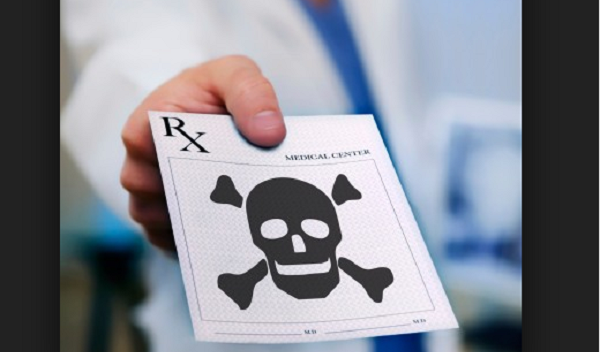In a recent video, Kelsi Sheren, a Canadian combat veteran, host of The Kelsi Sheren Perspective, and an outspoken opponent of Canada’s Medical Assistance in Dying (MAiD) policies, shared how Canada’s government-controlled healthcare system plans to euthanize an estimated 15 million Canadians between 2027 and 2047, a staggering figure justified under the pretext of cost savings.
While doctor-assisted suicide in the U.S. has not yet reached the alarming extremes observed in Canada, the “death with dignity” movement is actively attempting to change that. Pending Governor Hochul’s signature on New York’s recently passed bill, 11 states and Washington, D.C., will permit this abhorrent and immoral practice.
Fortunately, dedicated coalitions – including the disability rights community, pro-life organizations, leaders within the Catholic Church, and other advocates – have helped slow its expansion.
Since Oregon first legalized assisted suicide in 1997, nearly 10,000 deaths have occurred under such laws. Nevertheless, with a culture increasingly embracing death as a solution, it’s difficult to predict whether the U.S. will ultimately follow Canada’s troubling example by normalizing assisted death instead of prioritizing compassionate care.
Click here to sign up for pro-life news alerts from LifeNews.com
What often goes unnoticed, however, is that existing U.S. healthcare policies are already enabling the quiet killing of vulnerable Americans – not through legalized suicide, but through hospital protocols and policies that deny care, withdraw treatment, or subtly hasten death.
Though it’s impossible to know the precise numbers, with nearly 25,000 hospitals, nursing homes, and hospices operating across the U.S., it’s clear that far more patients have become victims of a healthcare system driven by institutional directives prioritizing cost-efficiency over humane, patient-centered care.
Even more alarming is that this growing disregard for human life isn’t occurring in a vacuum; it reflects a deeper cultural shift toward a utilitarian worldview, in which the inalienable worth of every individual, regardless of age, disability, or prognosis, is increasingly ignored. Instead of viewing vulnerable individuals as persons worthy of protection, too many policymakers and healthcare authorities now view them as “costs” to be managed and burdens to be removed.
When policymakers and medical groups begin framing suffering as something best eliminated through death rather than alleviated through patient-centered care, the outcome is a gradual, systemic abandonment of vulnerable populations, especially those unable to advocate for themselves.
For decades, U.S. healthcare policies, which have been shaped by hospital administrators, lawmakers, and medical ethicists, have quietly undermined life-affirming treatments. Decisions increasingly fall into the hands of bureaucrats and healthcare systems steered by financial considerations, rather than being made by patients, their families, or surrogates.
These include medical futility policies, non-consensual imposition of do-not-resuscitate (DNR) orders, terminal sedation intended to hasten death, use of brain death or persistent vegetative state (PVS) diagnoses to justify withdrawal of care, pro-death advance directives, and the denial of due process for families seeking to dispute medical decisions, to name a few.
Perhaps most concerning, basic care – nutrition and hydration provided via feeding tubes – has been reclassified as “medical treatment.” Since the 1980s, this shift has allowed doctors to remove feeding tubes even from patients who are neither terminal nor actively dying and who can otherwise process food and hydration. This single policy change has endangered countless medically vulnerable people.
My family established the erri Schiavo Life & Hope Network in response not only to my sister Terri’s death but also to the growing pattern of systemic failures that threaten the medically weak. Our mission is to uphold human dignity, especially for individuals facing life-threatening decisions in hospitals and care facilities.
Through our 24/7 National Crisis Lifeline, we provide urgent legal and medical referrals, along with ethical guidance, whenever the U.S. healthcare system attempts to impose any of these well-established anti-life policies on a patient or their loved ones.
The Life & Hope Network also educates the public, promotes life-affirming healthcare policies, and strives to restore a culture that respects the God-given, intrinsic value of every human being, especially those with cognitive disabilities, serious medical conditions, as well as the elderly.
There is simply no other advocate like the Life & Hope Network, and no comparable national resource exists like our 24/7 Crisis Lifeline, dedicated to assisting patients and families when they need it most.
The sobering reality is this: an increasing number of our medically fragile are being abandoned, and no one is coming to their rescue – not lawmakers, not the federal agencies overseeing our healthcare system, and not the medical establishment.
It falls upon families willing to advocate for their loved ones and upon committed organizations like the Terri Schiavo Life & Hope Network. Without this defense, the culture of death will inevitably spread unchecked, with the weakest among us paying the ultimate price.
LifeNews Note: Bobby Schindler and his family work as patient advocates, establishing the non-profit Terri Schiavo Life & Hope Network in honor of his sister, Terri. Click here to learn more about the Life & Hope Network.
The post Canada Plans to Euthanize 15 Million People in the Next 20 Years appeared first on LifeNews.com.
Click this link for the original source of this article.
Author: Bobby Schindler
This content is courtesy of, and owned and copyrighted by, https://www.lifenews.com and its author. This content is made available by use of the public RSS feed offered by the host site and is used for educational purposes only. If you are the author or represent the host site and would like this content removed now and in the future, please contact USSANews.com using the email address in the Contact page found in the website menu.








